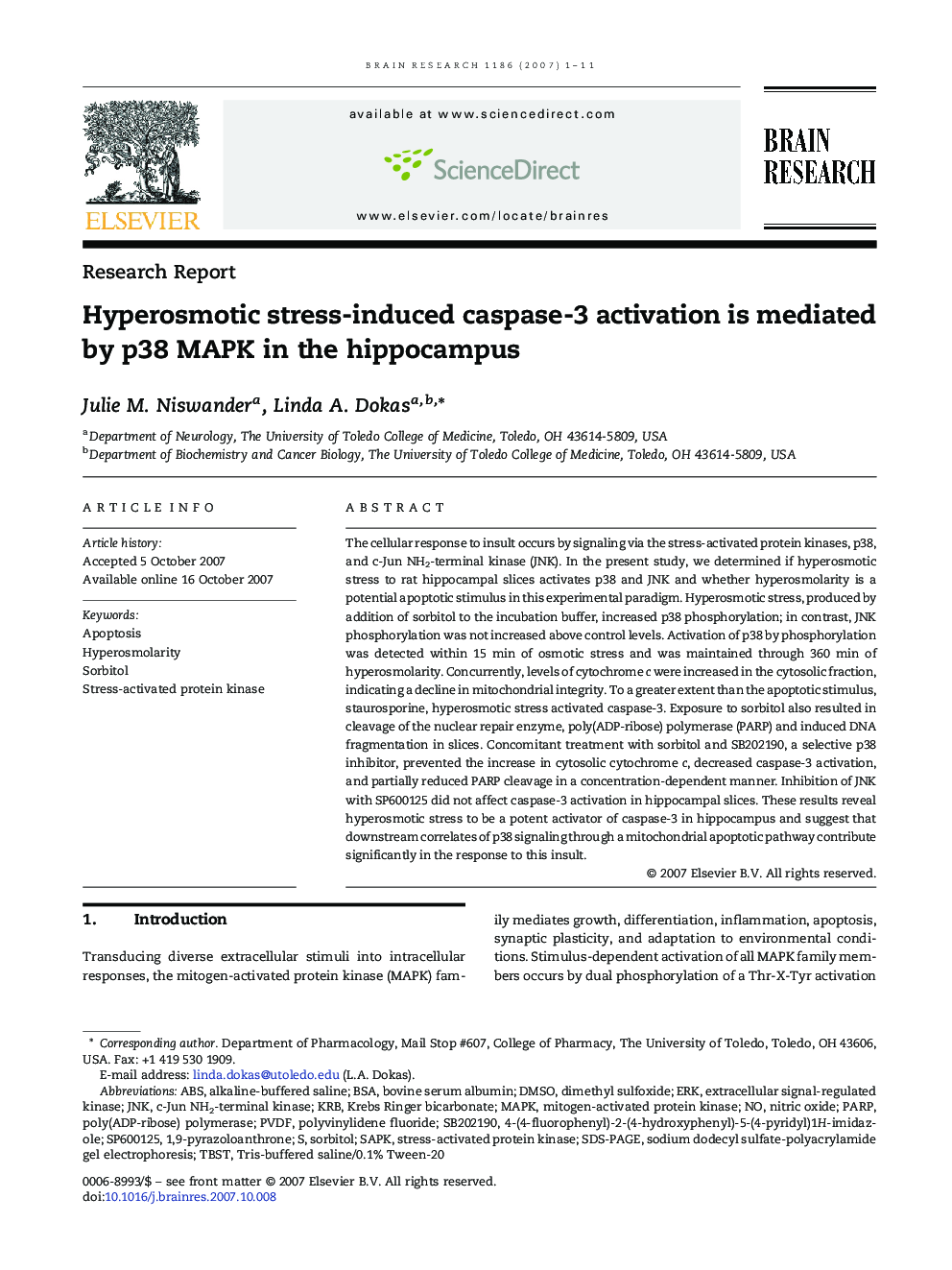| کد مقاله | کد نشریه | سال انتشار | مقاله انگلیسی | نسخه تمام متن |
|---|---|---|---|---|
| 4330261 | 1614253 | 2007 | 11 صفحه PDF | دانلود رایگان |

The cellular response to insult occurs by signaling via the stress-activated protein kinases, p38, and c-Jun NH2-terminal kinase (JNK). In the present study, we determined if hyperosmotic stress to rat hippocampal slices activates p38 and JNK and whether hyperosmolarity is a potential apoptotic stimulus in this experimental paradigm. Hyperosmotic stress, produced by addition of sorbitol to the incubation buffer, increased p38 phosphorylation; in contrast, JNK phosphorylation was not increased above control levels. Activation of p38 by phosphorylation was detected within 15 min of osmotic stress and was maintained through 360 min of hyperosmolarity. Concurrently, levels of cytochrome c were increased in the cytosolic fraction, indicating a decline in mitochondrial integrity. To a greater extent than the apoptotic stimulus, staurosporine, hyperosmotic stress activated caspase-3. Exposure to sorbitol also resulted in cleavage of the nuclear repair enzyme, poly(ADP-ribose) polymerase (PARP) and induced DNA fragmentation in slices. Concomitant treatment with sorbitol and SB202190, a selective p38 inhibitor, prevented the increase in cytosolic cytochrome c, decreased caspase-3 activation, and partially reduced PARP cleavage in a concentration-dependent manner. Inhibition of JNK with SP600125 did not affect caspase-3 activation in hippocampal slices. These results reveal hyperosmotic stress to be a potent activator of caspase-3 in hippocampus and suggest that downstream correlates of p38 signaling through a mitochondrial apoptotic pathway contribute significantly in the response to this insult.
Journal: Brain Research - Volume 1186, 19 December 2007, Pages 1–11